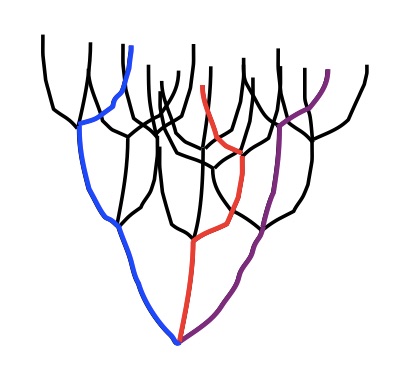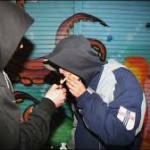…by Shaun Shelly…
I just pulled into a lodge in Banff, Canada at 2 AM (roughly noon for me) after a flight delay and missed shuttle. I’m way too tired to introduce this intelligently. All I can say is that I have huge respect for Shaun’s understanding of what goes on in opiate addiction, both above and below the surface we call treatment. See for yourself:
……………………………
Firstly, I think that the most important thing to remember is that OST (either agonists such as methadone or partial-agonists such as Buprenorphine, with or without naloxone) saves lives. There is up to 75% reduction in mortality for those in these programmes as opposed to those who do not have access. That alone should sweep away almost any argument against the utility/ethics/need for OST programmes. OST is well researched and has been shown to work and save lives over many years. (*1 for examples -there are many)
Secondly, low threshold programmes, such as the one you describe [see last post], that do not insist on abstinence or accessing other services, are a vital part of the continuum of care. The data tells us that psychosocial interventions such as CBT add nothing to the outcomes of these programmes in terms of drug use, retention, other health issues etc. Personally I have some issues with the design of some of these studies, and as with most “addiction” research they are too limited to draw absolute conclusions from, but certainly the lack of availability or the lack of willingness to engage in psychosocial services should NEVER prevent the supply of OST.
Thirdly; there is plenty of evidence that these programmes improve access to health services; improve compliance on ARVs and TB meds; reduce criminal activity; improve quality of life in some people; can help people become employed; lead to people choosing to engage in other “addiction” treatment programmes, including abstinence based programmes (but this increases risk of mortality in the short-term!) etc etc
So, it is clear, in my opinion, that we should be offering low-threshold OST programmes. I think it is also very important to note that this type of programme, along with needle and syringe programmes, offers a unique opportunity for drug users who are highly stigmatised to engage with health and other services, and, perhaps vitally, to engage with people who are part of a wider community without stigma or judgement. This interaction can, and sometime does, provide the “scaffolding to construct a vision of future self” (to paraphrase one of my favourite quotes from Marc).
For some people the simple move from a street opioid to a pharmaceutical opioid with a longer half-life is all that is needed to find some stability and start “living” again. If they have the correct support structures, mental faculties, education, family or alternative family structure, the right lucky break or a guardian angel individually or in any combination, they will be able to build a productive life. I know many such people. They are still dependent on an opioid, but are not addicted – so what! Just the structure of attending the clinic and not having heroin be their all-consuming vocation, can give them the space and the belief to start making changes, and these are often self-accelerating. Some of these people will eventually down-titrate to zero or close to zero dose, some may not. Their choice. Some may have, as Dr Mark Willenbring has suggested to me, a hypoactive endogenous opioid system that requires a life-long agonist to function optimally. Either way, they, and many of the rest of the world, except the abstinence Nazis, are happy.
However, there are many exceptions. While many of the people you saw “weren’t anywhere close to safe and stable in the big picture” I would argue that this has little to do with their drug use. I certainly do not want to paint all street dwelling dependent heroin users as victims – they are often the most resourceful and resilient people I have ever met – but many of them (but not all as Gabor Mate would have us believe) are sufferers of serial trauma and most have been highly stigmatised, ciminalised and ostracised. In this case, they may not have the resources, intrinsic and extrinsic, to build on the new-found structure of methadone or buprenorphine and create a “new life” or find “recovery”. Indeed, for many that may not even be desirable.
For many of these people heroin is a form of vocation and indeed the thing that binds them to their street family (see the video I have linked at the end of this post). I have worked extensively with these populations, and I find that for many drug use is a supremely logical choice in the face of little chance of finding meaning in what others would call “normal” pursuits. As I stated earlier, this is not a problem of pharmacology, this is a problem that lies beyond the individual and in the structural and systemic issues of modern society – the work of Alexander (his FULL BODY of work!) is very relevant. To expect methadone programs to address these issues is unrealistic!
This leads me to the one area where I do have a problem with methadone programmes and the reductionist approach that reduces harm reduction to a set of bio-medical interventions. Just because people are being kept alive does not mean we have solved the problem. The other issues that need attention are criminalisation, stigma, inability to address the needs of those with mental health and other issues. These are not (only) drug issues, but societal issues.
One of the steps towards addressing these wrongs lies in the fact that agonist therapies work – they are the only consistent therapies to work with “addiction” when it comes to health issues. The logical conclusion is that we should make pharmaceutical agonists easily available to all drug users – allow these street users the same benefits that many of us “functional due to privilege” users enjoy – access pharmaceutical quality drugs with the minimum of barriers. That is decriminalise, legalise and regulate all drugs. This will not solve all the problems, but will go a long way to prioritising who does and doesn’t need “treatment”!
Video on “street families”:
http://www.featureshoot.com/2015/11/photographer-chris-arnade-on-street-addiction-and-the-devastation-it-leaves-in-its-wake/
*1 EG :Caplehorn, J. R., Dalton, M. S., Haldar, F., Petrenas, A. M., & Nisbet, J. G. (1996). Methadone maintenance and addicts’ risk of fatal heroin overdose. Substance Use & Misuse, 31(2), 177–196. http://doi.org/10.3109/10826089609045806
Connock, M., Juarez-Garcia, a., Jowett, S., Frew, E., Liu, Z., Taylor, R. J., … Taylor, R. S. (2007). Methadone and buprenorphine for the management of opioid dependence: a systematic review and economic evaluation. Health Technology Assessment (Winchester, England), 11(9). http://doi.org/10.2165/11632820-000000000-00000


 prescriptions for methadone, counselling, and a place to hang out for a little while.
prescriptions for methadone, counselling, and a place to hang out for a little while. a staff person present, just being friendly, chatting, offering snacks. The staff consists of two social workers, two MA level psychologists, a criminologist (to help with charges, probation, as so forth), and the doctor, Carl, who wrote the methadone prescriptions. Carl was my host.
a staff person present, just being friendly, chatting, offering snacks. The staff consists of two social workers, two MA level psychologists, a criminologist (to help with charges, probation, as so forth), and the doctor, Carl, who wrote the methadone prescriptions. Carl was my host. (in exchange for used needles) — I mostly sat in a chair next to Carl in an office/interview room, while one client after another came for their methadone script. It was sort of fascinating.
(in exchange for used needles) — I mostly sat in a chair next to Carl in an office/interview room, while one client after another came for their methadone script. It was sort of fascinating. in the chair across from the doc. They often looked defeated and helpless. While some expressed enthusiasm, plans for the future, many looked dreamy or blank. Quite a few had the hunched over posture that expresses shame or remorse. Their eye contact might be sparse and fleeting, looking down a lot — the gaze pattern of people who live with a chronic level of shame or sense of inferiority. A sense of personal failure they’ve grown deeply accustomed to.
in the chair across from the doc. They often looked defeated and helpless. While some expressed enthusiasm, plans for the future, many looked dreamy or blank. Quite a few had the hunched over posture that expresses shame or remorse. Their eye contact might be sparse and fleeting, looking down a lot — the gaze pattern of people who live with a chronic level of shame or sense of inferiority. A sense of personal failure they’ve grown deeply accustomed to.










